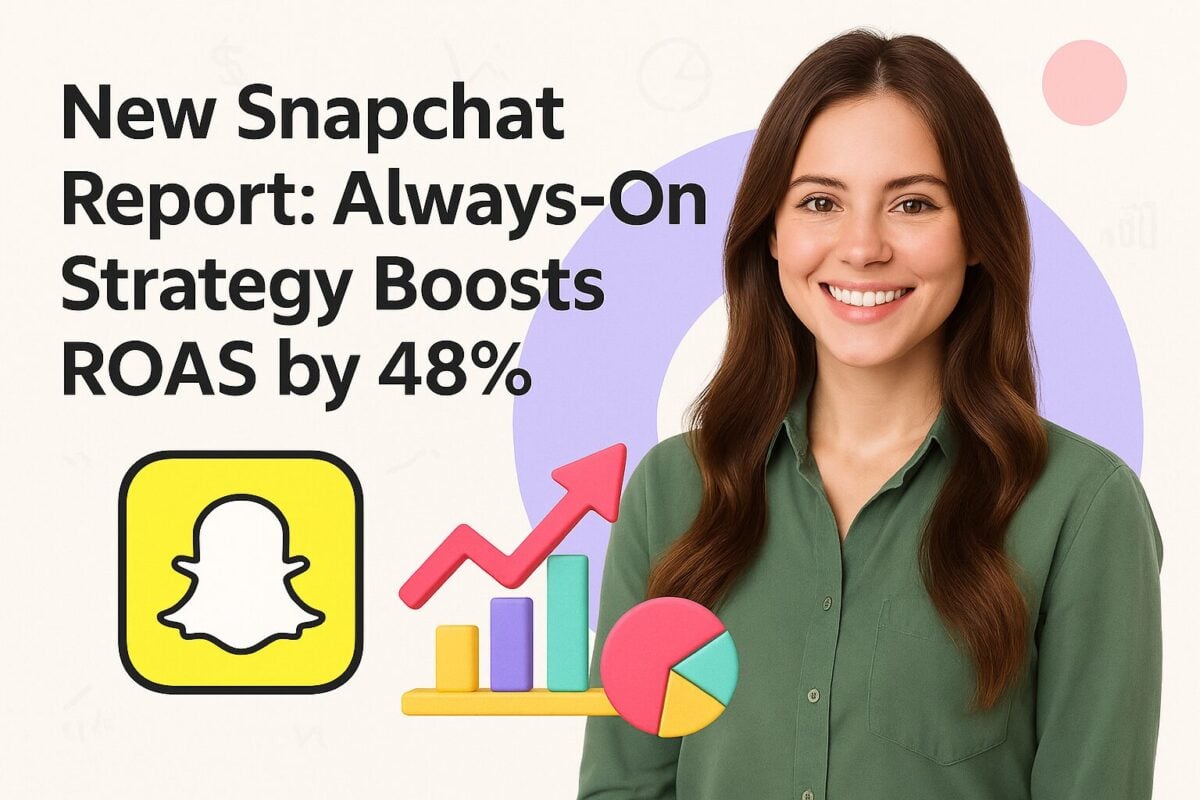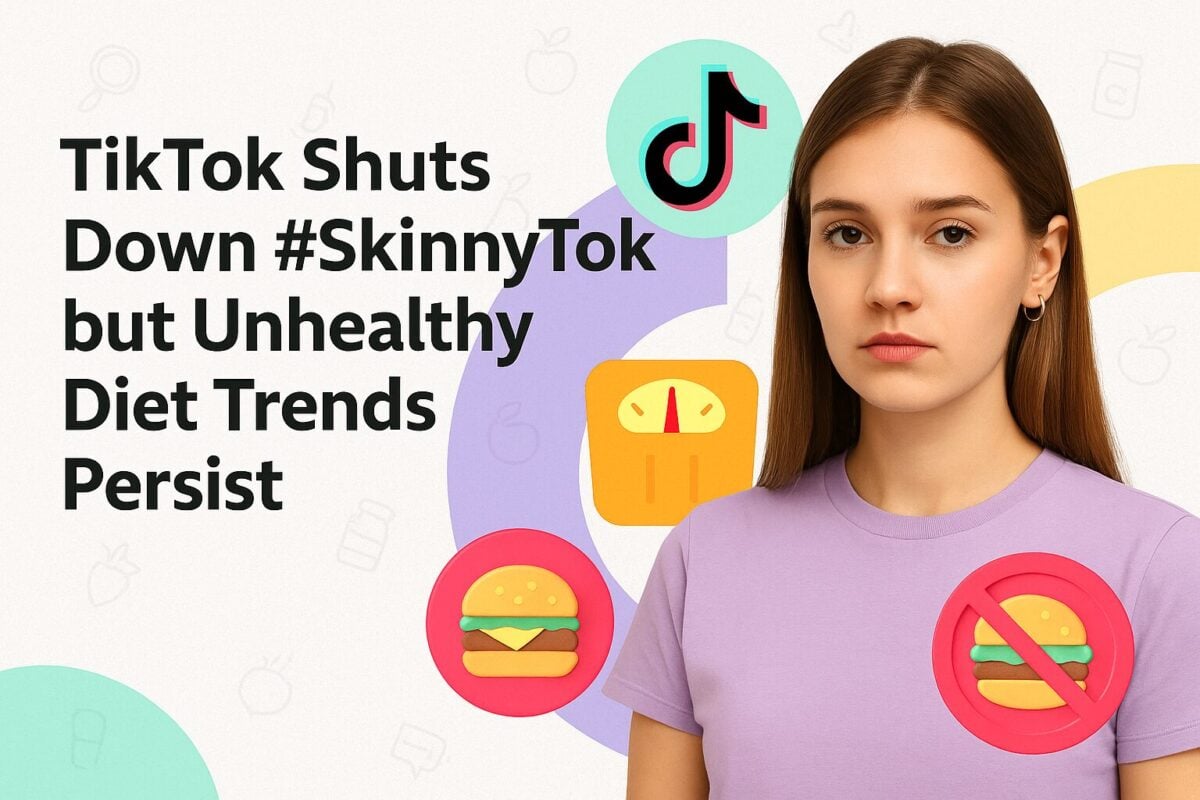Miquela Sousa, better known by the name Lil Miquela, is a 19-year-old Brazilian-American model, musical artist, and influencer with three million Instagram followers. She's partnered with the likes of Calvin Klein and Samsung and is rumored to have earned $10 million in 2020—a portion of which comes from paid partnerships with brands.
Oh, and she's computer-generated.
Lil Miquela is what's known as a "virtual influencer." And she isn't alone. Keep reading to have all your questions answered.
What Are Virtual Influencers and How Do They Work:
What Are Virtual Influencers?
Virtual influencers are computer-generated characters that can be human-like, with realistic features, personalities, and characteristics. There are also virtual influencers that are more cartoonish in nature, with Barbie perhaps being the most recognizable of those. While they're not yet mainstream, they're certainly growing in popularity with some of them, like Lu do Magalu and Lil Miquela, racking up millions of followers on Instagram.
Virtual influencers are also referred to as digital avatars, CG-models, or digital characters. And, while they don't exist in the physical world with us, they live very full lives on social media. It's basically Second Life meets the real world except instead of one lonely teen in a bedroom creating a not-quite-lifelike avatar, there's a team of designers, writers, and artists hard at work to create a digital character that looks, moves, and speaks like just another human.
And, they really do look lifelike. Sure, if you look at the images from virtual influencers for longer than 1.5 seconds, you can tell that there's something not exactly human about them—they're too still, too perfect. But they're interesting. That's what makes them so impressive. And intriguing.
How Do Virtual Influencers Work?
Virtual influencers are created and managed by their creators. The creators are the ones who put in the work creating the backstories, growing followers on social media platforms, and overall marketing the virtual influencers. Their creators build these virtual influencers to meet their own needs and specifications, from what they look like to what they wear to how they behave. And, of course, they also manage the relationships and collaborations.
So, really virtual influencers don't work. They don't really exist, after all.
Virtual Influencers: How They Benefit Brands
Virtual influencers are becoming increasingly popular with brands, and for good reason. For starters, it's usually much easier to fix mistakes when dealing with virtual influencers rather than a real person. Plus, no breaks. And no worrying that your instructions will be interpreted incorrectly. Some brands find virtual influencers so appealing that they've created digital characters of their own, like Liv, a virtual ambassador for the Renault automotive brand.
As technology continues to advance, these virtual influencers will become more and more realistic. But for now, the fact that virtual influencers are clearly not human doesn't seem to bother brands like Coach, Dior, Balenciaga, Prada, or any of the other brands that have already joined forces with virtual stars like Lil Miquela.
Virtual Influencers: Pros
Let's take a closer look at the advantages of using virtual influencers for influencer marketing:
- Production is generally easier since you don't have to hire people for hair and makeup, rent studio space, or scope out locations
- There's no need for travel so no flights or travel expenses
- You won't have to deal with emotions or attitude
- Virtual influencers can be in multiple places at the same time
- This is shiny and new right now so there's additional potential for attention and coverage
- Virtual influencers are safe and reliable—no surprises here
- Virtual influencers have nearly 3X the engagement as human influencers, according to HypeAuditor
- They're available 24/7
Virtual Influencers: Cons
Now that we've covered the advantages of virtual influencers, we need to also dive into the disadvantages.
- Paying for a 3D digital character powered by AI can get expensive
- As time goes by, the novelty of virtual influencers will where off and interest in them will likely decline
- Virtual influencers raise ethical concerns since they aren't truly able to experience the things they're promoting (the taste of food, the feel and fit of clothing, the tingle of skincare products)
- There may be a limit to the emotional connection consumers can make with virtual influencers
8 Top Virtual Influencers
Now you know what virtual influencers are and how they work, as well as the pros and cons of working with them. Let's meet some, shall we? Here are the top 8 virtual influencers for 2021. We've included only humanistic virtual influencers here. Want to know more? Check out our list of the 15 top virtual influencers for 2021 for a list that includes cartoonish characters, too.
1. Lu do Magalu
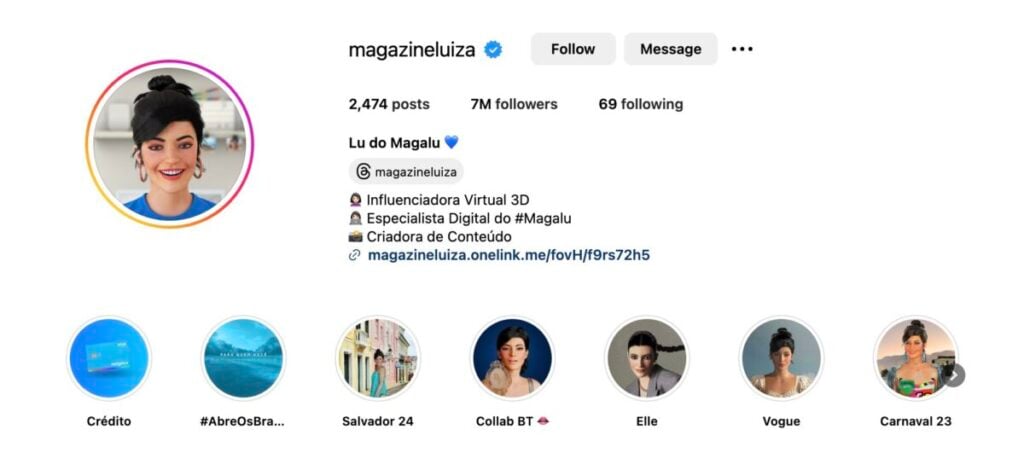
Source: instagram.com
Average Likes Per Post: 4.8K
Average Comments Per Post: 303
Engagement Rate: 0.1%
Estimated Earnings Per Post: $10,054–$16,756
Lu do Magalu is the most followed virtual influencer and has the most visibility of a virtual human in the world. She has more than 14.4 million followers on Facebook, more than five million followers on Instagram, more than 2.4 million YouTube subscribers, 1.3 million followers on Twitter, and 1.4 million followers on TikTok.
Lu do Magalu first came onto the scene more than 10 years ago for Magazine Luiza, one of the biggest retail companies in Brazil, to market iBlogTV on YouTube. Her popularity has only grown since then and she's been featured in unboxing videos, product reviews, and has even shared software tips for Magazine Luiza.
2. Lil Miquela
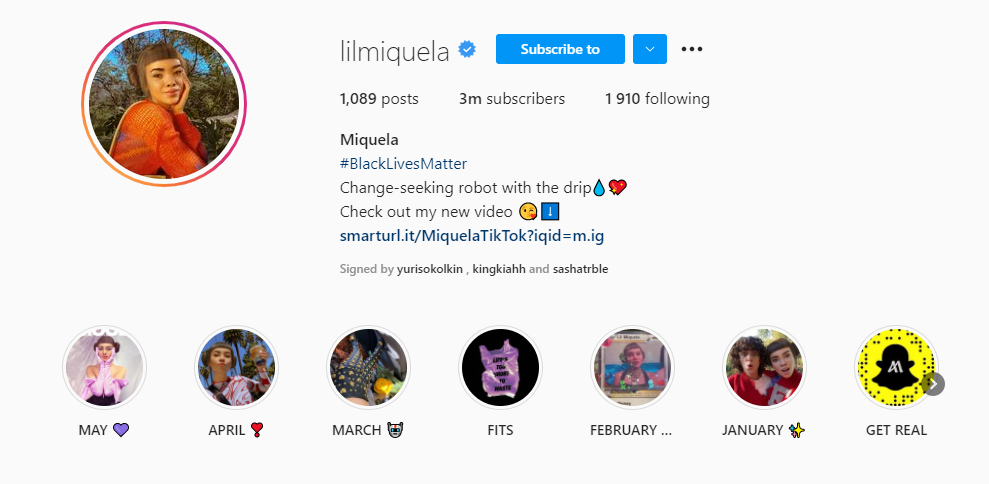
Source: instagram.com
Average Likes Per Post: 53K
Average Comments Per Post: 462
Engagement Rate: 1.76%
Estimated Earnings Per Post: $6,033–$10,055
Miquela Sousa is a freckle-faced Brazilian-American with an endearing gap between her front teeth better known as Lil Miquela. She's a virtual influencer created by Los Angeles-based startup Brud. Lil Miquela has worked with some high-end fashion brands like Dior, Prada, and Calvin Klein, but she's more than just a cute face. She released a single, "Not Mine," in 2017 and debuted her first music video for the song "Hard Feelings" at Lollapalooza's online festival in 2020.
Lil Miquela has 3 million Instagram followers, nearly 30,000 Twitter followers, and 2.8 million TikTok followers.
3. Knox Frost
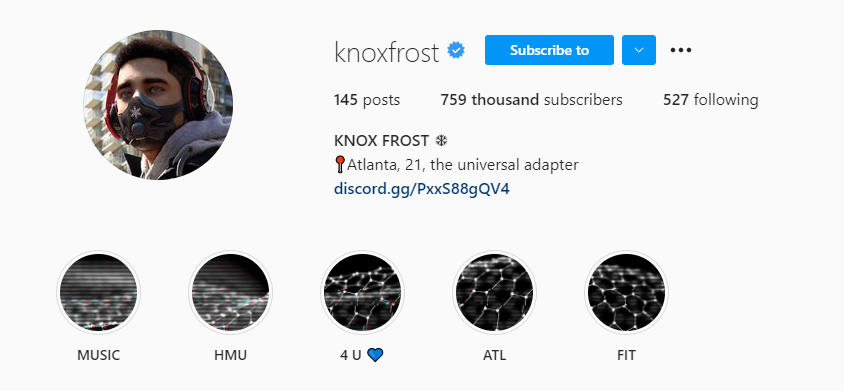
Source: instagram.com
Average Likes Per Post: 8.8K
Average Comments Per Post: 176
Engagement Rate: 1.1%
Estimated Earnings Per Post: $2,416.50–$4,027.50
Knox Frost is the top male virtual influencer on Instagram. He's 21 years old and comes from Atlanta. Even though he's only been around for a short time, Knox has been able to grow his following to more than 800,000 followers on Instagram, organically. On his account, he shares lots of positivity as well as his struggles with fitting in. And, it seems to resonate with other men on the platform—US men in their early twenties make up his largest audience segment.
4. Thalasya
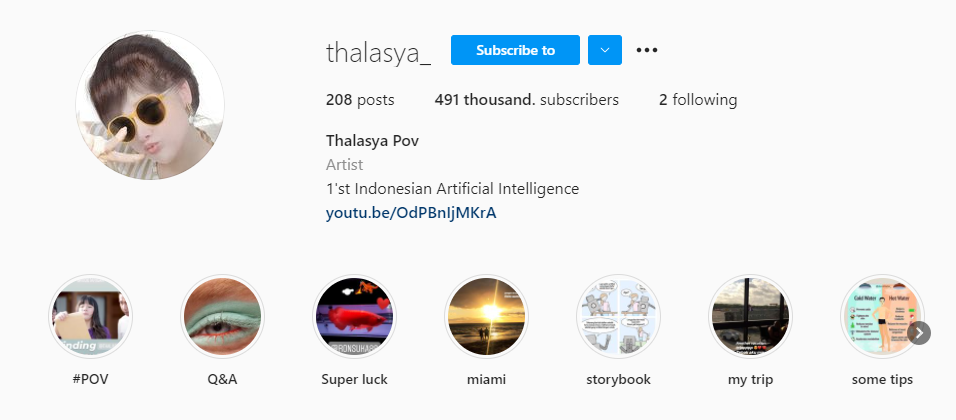
Source: instagram.com
Average Likes Per Post: 2.9K
Average Comments Per Post: 31
Engagement Rate: 0.58%
Estimated Earnings Per Post: $1,482–$2,470
Thalasya is originally from Jakarta, Indonesia, and travels all around her country, mainly enjoying shopping and lounging on balconies. She even traveled to the US for some time at a Florida recording studio. To fund her nomadic lifestyle, Thalasya advertises for restaurants, hotels, health pills, and even has her own clothing store (Yipiiiii) that she owns with her friend Zeline. Thalasya was created by Magnavem Studio and first hit the scene in 2018. Since then, she's hit nearly 500,000 followers on Instagram.
5. Imma
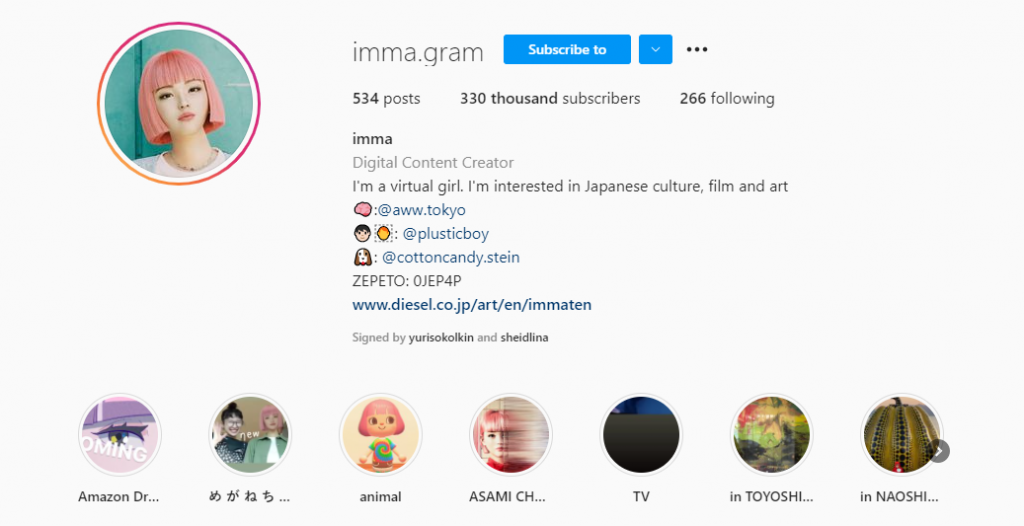
Source: instagram.com
Average Likes Per Post: 7.6K
Average Comments Per Post: 48
Engagement Rate: 2.28%
Estimated Earnings Per Post: $993–$1,655
Imma, Japan's first virtual model, hails from Tokyo and first appeared in July 2018. She has made a lot of headlines since then and was even named by Japan Economics Entertainment as a "New 100 Talent to Watch." She enjoys Japanese culture, art, and film and has worked with several big-name brands like Burberry, Adidas Tokyo, TikTok, and IKEA Japan. In the two short years since she first appeared as a virtual influencer, Imma has built an Instagram following of more than 332,000 followers and has a TikTok following of nearly 250,000.
6. Bermuda

Source: instagram.com
Average Likes Per Post: 21K
Average Comments Per Post: 284
Engagement Rate: 7.2%
Estimated Earnings Per Post: $886.50–$1,477.50
Bermuda has been around since 2016 and is based in Los Angeles. Her goal is a noble one: to motivate more women to follow careers in robotics. She's also a musician and has released a cover of "Under the Bridge" by the Red Hot Chili Peppers that you can stream on Spotify.
7. Shudu
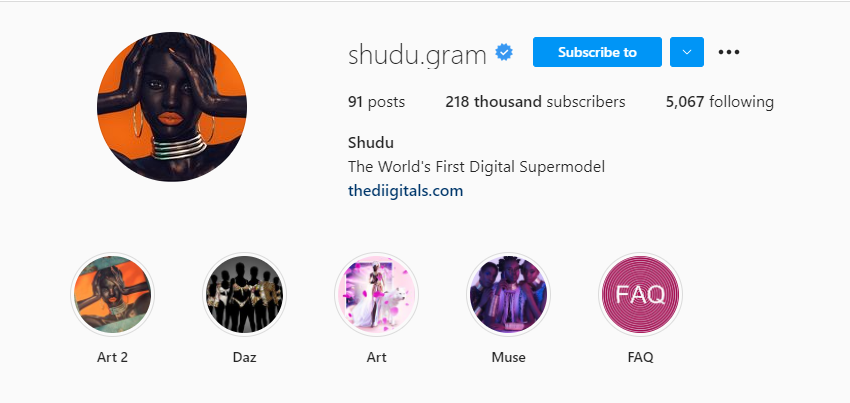
Source: instagram.com
Average Likes Per Post: 6.6K
Average Comments Per Post: 97
Engagement Rate: 3.1%
Estimated Earnings Per Post: $644.25–$1,073.75
Shudu is one of the more realistic-looking virtual influencers that we've come across. And, wow, is she stunningly beautiful. Her Instagram account is filled with gorgeous imagery that's just truly inspiring. In March 2018, Rihanna's Fenty Beauty brand shared some of Shudu's content, exposing her to their 8 million followers—even though they had no idea if she was real or not. Shudu has signed a modeling contract with digital supermodel agency The Diigitals.com and has also joined Balmain as one of their models.
8. Blawko
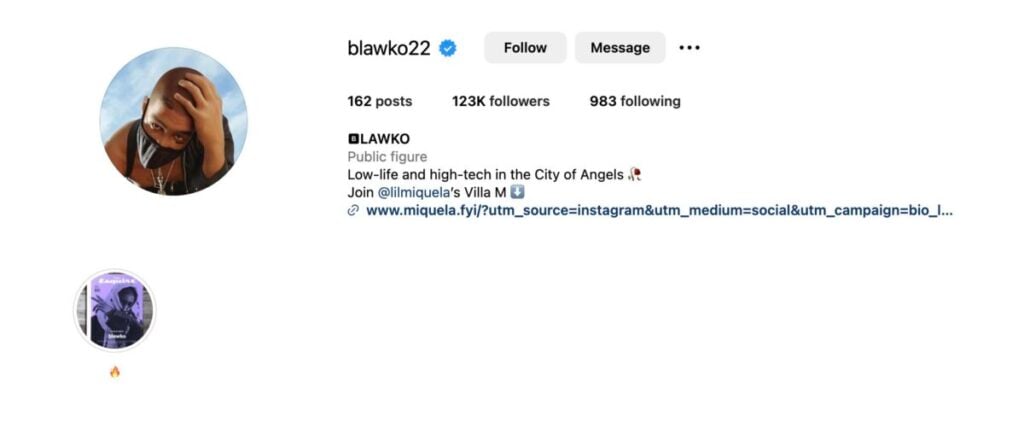
Source: instagram.com
Instagram Followers: 155K
Average Likes Per Post: 6.9K
Average Comments Per Post: 113
Engagement Rate: 4.45%
Estimated Earnings Per Post: $468.75–$781.25
Blawko is another virtual influencer created by Los Angeles-based company Brud. He regularly wears a mask covering the bottom half of his face, has tattoos, and dresses in streetwear fashion. He's a laid-back digital character and has been known to have an on-again-off-again relationship with Bermuda. But, if you look at his Instagram feed, it seems he's been spending quite a bit of time with Lil Miquela. A couple of years ago, he started doing online interviews, started a YouTube channel (he has about 5,000 subscribers but hasn't posted in a year), and even did a DJ set on NTS Radio.
Future Trends: What’s Next for Virtual Influencers?
The future of virtual influencers is set to evolve in exciting, yet complex ways. As AI technology continues to advance, we can expect virtual influencers to become more lifelike, with enhanced emotional intelligence and even deeper personalization. These digital personas will integrate seamlessly into metaverse platforms, offering immersive brand experiences that cater to highly specific user needs.
However, with this increased presence comes a growing call for legal regulations—governing everything from disclosure practices to intellectual property rights. Brands and influencers alike may soon face compliance issues, as consumers demand greater transparency about how these AI-driven characters are used in marketing.
As virtual influencers expand into new digital spaces, especially in the metaverse, they’ll serve as ambassadors for brands in virtual shops, concerts, and events, revolutionizing the way we engage with online communities. However, this rapid evolution poses challenges for marketers.
The need to navigate ethical boundaries—ensuring authenticity and avoiding manipulation—is more pressing than ever. The future isn’t just about adopting these trends, but about using them responsibly to maintain audience trust while capitalizing on the endless possibilities that virtual influencers offer.
Wrapping Up
While virtual influencers are neat, they might not be right for every brand. It's important to really consider your marketing strategy and make decisions based on what you want from your influencer marketing campaigns. At the end of the day, people follow influencers because they look up to them. They sometimes make mistakes, they aren't perfect, they're human. Just like us. So, virtual influencers might offer your customers and potential customers a novel experience but are they going to be able to make real connections and help you sell your products? Maybe. But that's a question that's best answered by research and paying attention to what your audience wants instead of just moving to the next shiny thing.

